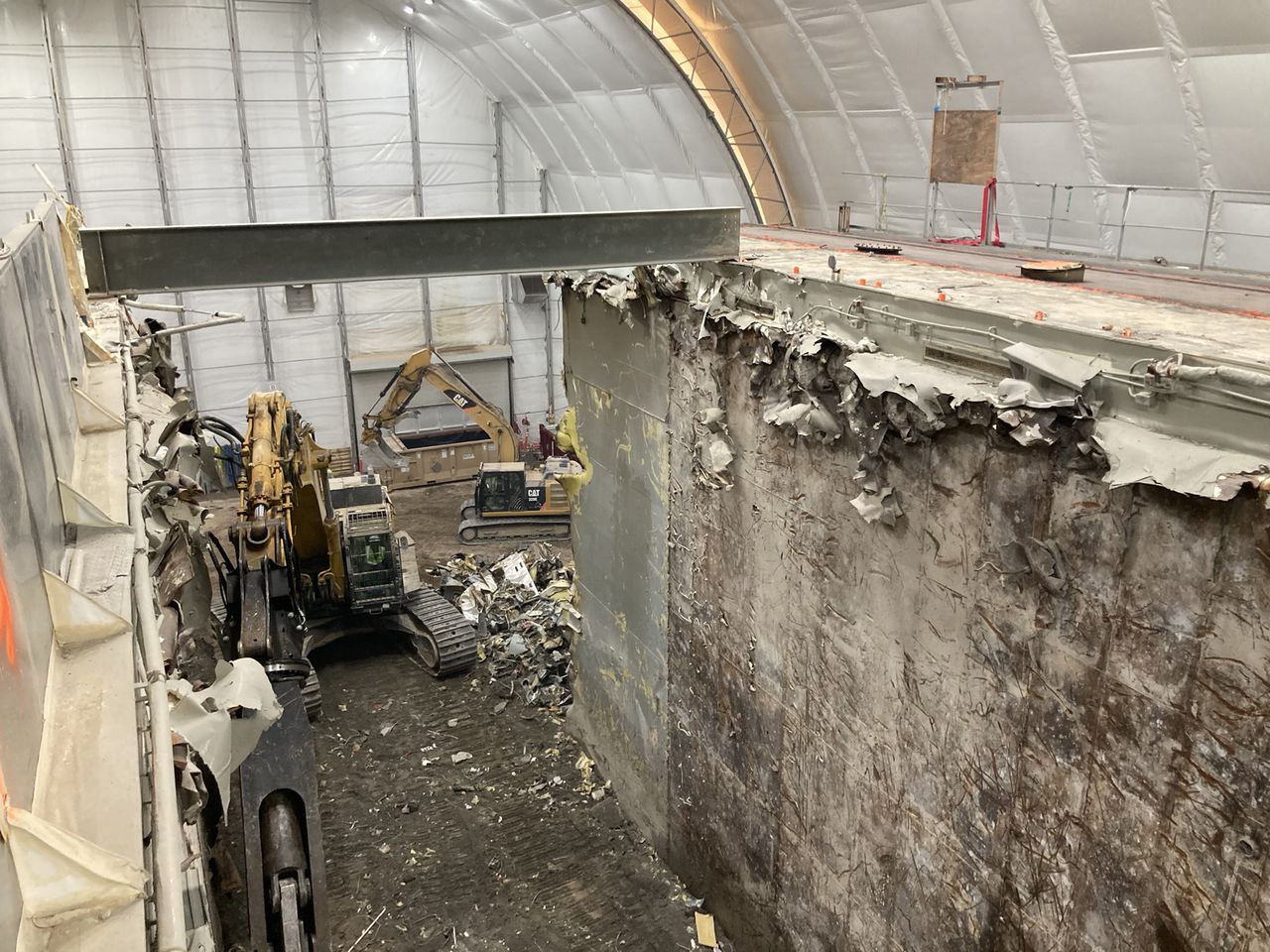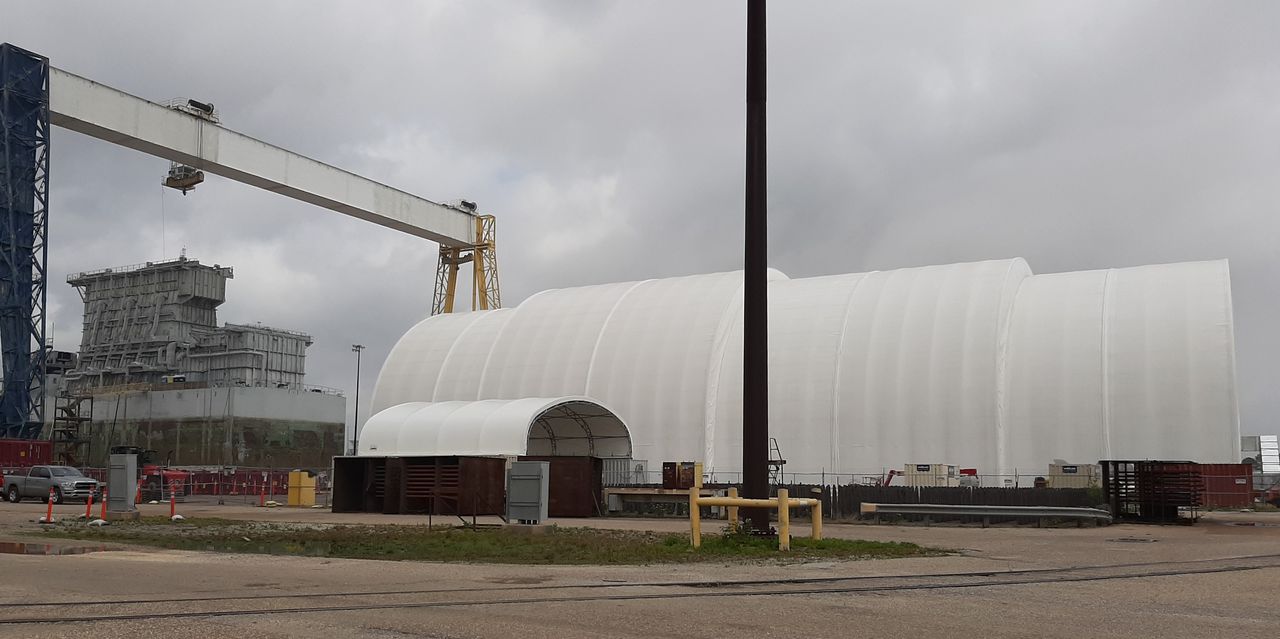Project to dismantle Navy nuclear fueling barge in Mobile is complete
In June 2021, a Navy barge used in dockside nuclear refueling operations arrived in Mobile to be dismantled. The company handling the multimillion-dollar job has announced that work is complete.
“This was a first-of-a-kind project completed on behalf of the Navy, which used a unique interagency agreement between Naval Sea Systems Command (NAVSEA) and Nuclear Regulatory Commission (NRC) to facilitate the Navy performing this work in the commercial sector,” said APTIM Vice President of Business Development Chris Lee. “Not only did APTIM complete the work safely and by deadline, but we also brought $28.3 million to the economy of Mobile and the surrounding community for labor, tooling, supplies, housing/lodging, and other subcontracted services.”
For many months, the Surface Ship Support Barge was a part of the waterfront skyline opposite downtown Mobile, standing more than 100 feet tall after being moved onto land for the teardown.
The ship was born within yards of where it was dismantled: It was built by Alabama Dry Dock and Shipbuilding Co. as a tanker in World War II, and came to rest on Alabama Shipyard, which occupies property that formerly belonged to ADDSCO. When the vessel arrived in Mobile, APTIM said the contract to dismantle it was worth $129 million.
The teardown took place inside a special enclosure, with the ship being gradually moved into the contained work area as portions of it were sliced off. In March, APTIM announced that it had finished tearing down the “wet pit,” the portion of the vessel where underwater fuel handling and refueling work was done. Shielding on the wet pit included about 2,500 tons of steel-reinforced concrete.
A major project under way at Alabama Shipyard in spring 2022 is the disassembly of a Surface Ship Support Barge used by the U.S. Navy to refuel nuclear-powered vessels. The barge, at left is positioned on land at a large crane used to lower sections as they are cut off. Inside the white enclosure at right, the large sections are broken down for recycling or disposal.Lawrence Specker | [email protected]
Plans called for APTIM to remove “all hazardous and radiological materials following proper disposal regulations,” with most of the waste going to a facility in Andrews, Texas.
“Through detailed and complex engineering and planning, the SSSB was systematically dismantled, sized, and packaged for shipment, with more than 8,000 tons of waste material sent to a licensed disposal facility outside of Alabama and more than 400 tons of ferrous and non-ferrous metals recycled,” said the APTIM announcement. “Material sizing and packaging took place within an environmentally controlled containment structure to ensure zero radiological emissions occurred outside of the structure during demolition, sizing, and packaging activities.”

APTIM Federal Services LLC released this photo of work to break down a Navy nuclear refueling barge in Mobile. Excavators are shown during work to dismantle the vessels heavily shielded “wet pit,” where nuclear fuel assembles once were held. The work was done inside a tentlike enclosure.Courtesy of APTIM
Since the beginning of the effort to contract out the work, there has been speculation that the process used to dismantle the SSSB could serve as a partial model for the future breaking down of the carrier USS Enterprise, deactivated in 2012 and decommissioned in 2017. Mobile reportedly has been considered as a potential site for that project, expected to cost more than $1 billion.
According to reports published in early September, the Navy has narrowed its plan down to three locations, with the Enterprise to be dismantled in Newport News, Va.; Brownsville, Texas; or Mobile.
“Under this alternative, the Navy will contract with commercial industry to dismantle ex-Enterprise, including its defueled reactor plants, and dispose of low-level radiological waste and other hazardous waste at authorized commercial or Department of Energy (DOE) waste disposal facilities,” said the Navy.
